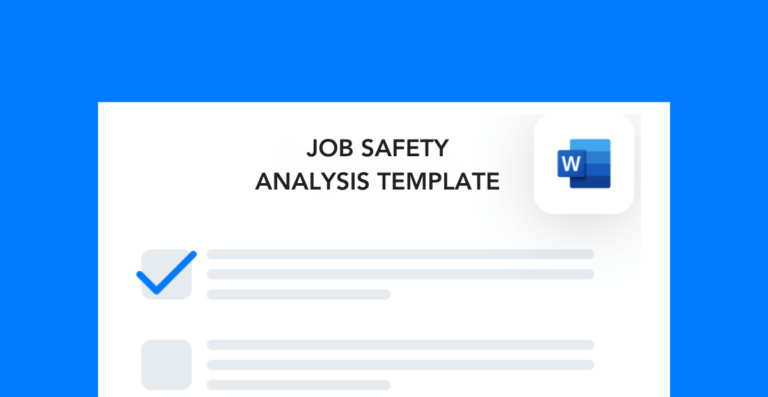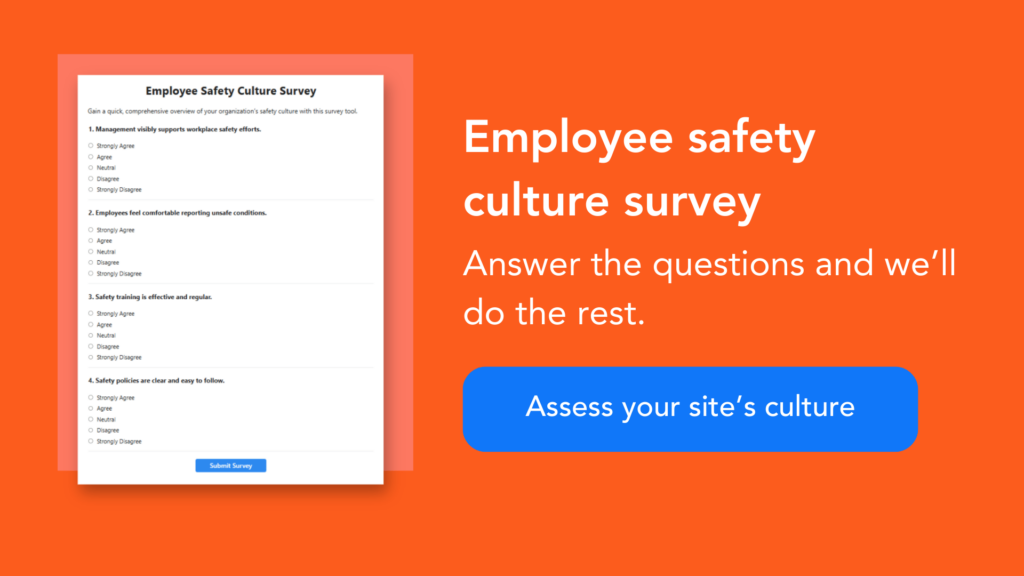Workplace safety goes far beyond compliance—it’s about creating a space where your team feels protected and empowered. Overlooked safety issues can cause injuries, disrupt workflows, and hurt your bottom line. Whether you’re a business owner, HR leader, or safety coordinator, these are the top 10 safety issues to address within your company.
#1: Slips, Trips, and Falls
Slips, trips, and falls are some of the most frequent workplace incidents across industries. Whether it’s slippery or uneven surfaces, poor lighting, pathway obstructions—the hazards that cause these incidents often go overlooked until someone gets hurt.
To prevent them, maintain clean, clutter-free walkways, repair flooring issues promptly, and install proper lighting. Use non-slip mats in high-risk areas and place clear signage near any wet or recently cleaned surfaces.
#2: Ergonomic Injuries
Ergonomic injuries often stem from improper lifting and poor workstation setup. These issues are especially common in warehouses, offices, and manufacturing facilities where employees perform the same motions repeatedly without proper support.
You can reduce risks by offering ergonomic assessments, training your team on proper lifting techniques, and providing equipment like lift assists or adjustable desks. Encourage frequent breaks and stretching to minimize long-term strain.
#3: Hazmat Exposures
Whether in a lab, factory, or cleaning supply closet, hazardous materials pose serious risks when employees don’t handle them correctly. Common causes of hazmat exposure include insufficient labeling or ventilation or failure to use the proper PPE.
That’s why all workers need hazmat training that covers how to properly handle and store these materials. You should also provider workers with quality PPE for each task and enforce standards for its use.
#4: Electrical Hazards
Overloaded circuits, exposed wiring, and makeshift repairs often create electrical hazards in the workplace. They can cause fires, serious injuries, and property damage.
Schedule regular electrical safety inspections, replace damaged cords and outlets, and avoid overuse of extension cords to control these hazards. Also, make sure only qualified personnel perform electrical work, and educate your team on how to recognize unsafe work conditions.
#5: Lack of Machine Guarding
In industrial settings, machine guarding plays a crucial role in workplace safety. When workers use machinery without sufficient protection in place, they’re much more likely to suffer an injury or near miss. Sometimes, these incidents happen when employees skip steps in a process. At the end of the day, however, it’s on you to prevent them from making unsafe choices at all.
Routine equipment inspections, preventative maintenance, and lockout/tagout refresher training are three of the best ways to protect your team from machine guarding safety issues.
#6: Fire Safety Failures
Blocked exits, expired fire extinguishers, and lack of fire drills are all signs of weak emergency preparedness. These oversights not only increase the risk of harm during a fire—they also expose your business to regulatory fines and operational downtime.
Review your fire safety plan regularly, ensure emergency exits are always accessible, and keep fire extinguishers, alarms, and sprinklers in good working order. Don’t forget to train employees on evacuation routes and conduct periodic drills to keep everyone ready.
#7: Fall Protection
Falls from height are a leading cause of serious workplace injuries, especially in industries like construction and warehousing. These incidents often happen when guardrails, harnesses, or other protective gear are missing or unused.
The top way to remove these issues is to provide appropriate fall protection equipment and reinforce proper usage through training and supervision. Another thing you can do is inspect all your platforms, guardrails, ladders, etc., to ensure that they’re secure.
#8: Workplace Violence
Workplace violence is one of the top 10 safety issues in the workplace that exists across all industries. When stress, conflict, or personal issues go unchecked in the workplace, the risk of violence increases. Oftentimes, managers either miss or dismiss early warning signs, leading to dangerous situations for employees and employers alike.
While you can’t guarantee zero workplace violence incidents, you can establish a zero-tolerance policy for violence and harassment. The goal of this policy should be to create a safe, supportive environment for victims.
#9: Employee Behavior
Believe it or not, employee behavior is a top source of safety concerns in the workplace. How many incidents each year have “user error” or “poor worker judgment” listed as a root cause? Sometimes this happens because you haven’t provided sufficient safety training, and sometimes it happens because workers don’t understand the importance of personal safety.
Make safety training a part of both onboarding and ongoing development. Use clear visuals, signage, and regular safety refreshers to keep safety top of mind, and encourage employees to ask questions and voice concerns without fear of reprimand.
#10: Fatigue and Overexertion
Overworking employees or pushing them without adequate rest can lead to fatigue-related accidents. Tired workers are less focused, slower to react, and more prone to injury—especially in physically demanding jobs.
Combat fatigue by monitoring workloads, rotating tasks, and enforcing regular breaks. Consider wellness initiatives that promote sleep, hydration, and overall wellbeing, helping your team to stay energized and alert on the job.




